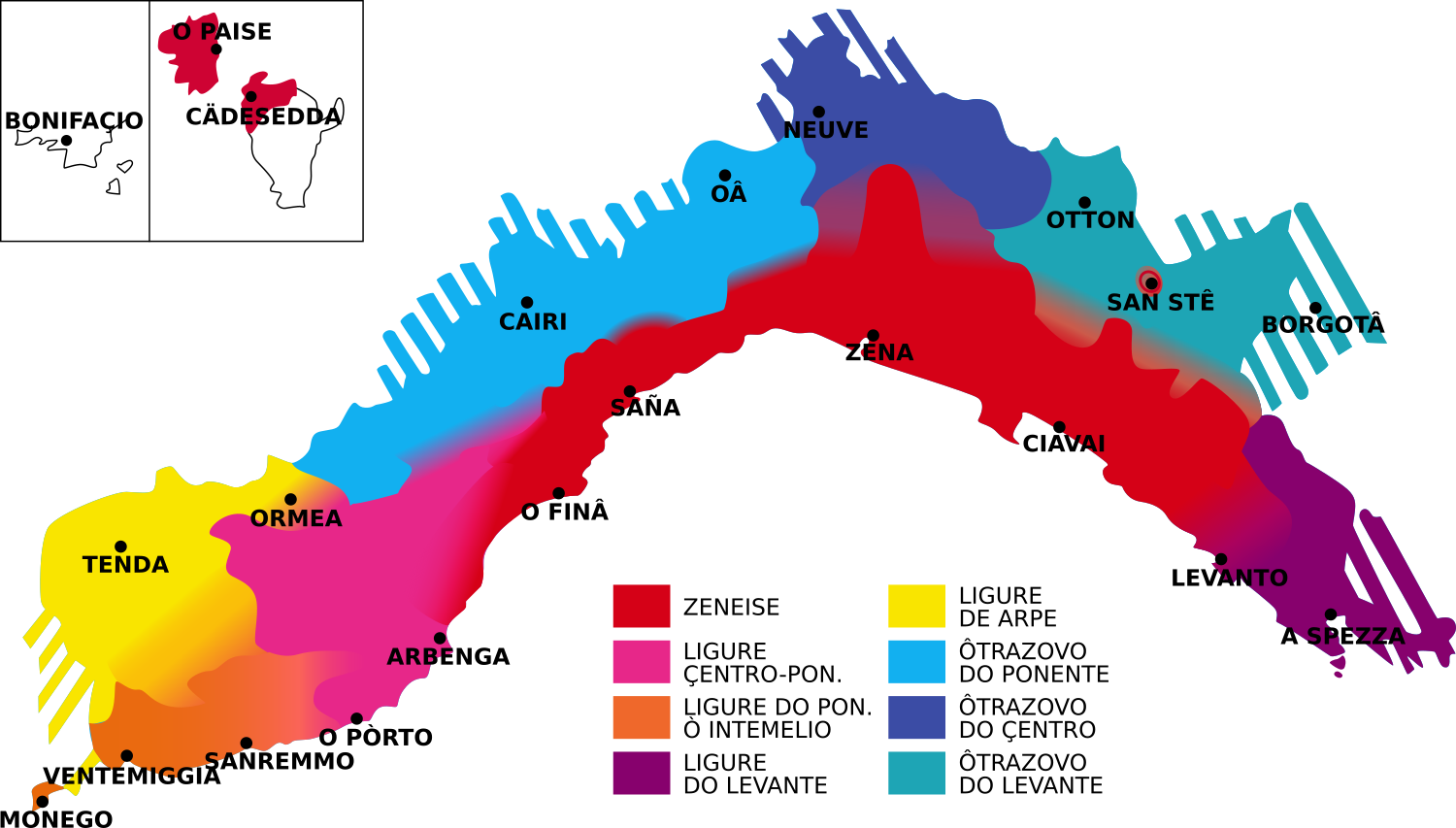Frequently asked questions
This page collects some of the most commonly asked questions on the topic of Ligurian.
Do you have more questions? You are welcome to contact us at the address [email protected].
What’s Ligurian?
The term “Ligurian” denotes the set of Romance varieties spoken in Liguria, including the local forms spoken in the Principality of Monaco and by the Tabarkin communities in the Sardinian islands.
Even though the name for the linguistic varieties of Liguria has historically been zeneise (Genoese), nowadays the term Ligurian is increasingly used, especially in the scientific world.

How to learn Genoese and other Ligurian varieties?
Genoese and other Ligurian varieties are easy to learn, especially for those who already speak another Romance language such as Italian, French or Spanish. The link below will take you to our list of books recommended for students of the language: dictionaries, grammars and other introductory texts.
 Learn section
Learn section
Once you have the fundamentals down, the best strategy is to jump in and start reading and listening to content, as well as trying to speak and write.
Many beginners, especially those who are unable to hear spoken Ligurian at home, end up mostly focussing on the written form and neglect the oral aspects. As with all languages, including Italian or English, the writing system cannot possibly represent all the nuances of the pronunciation and accent of a native speaker. Even though there are several proposals for spelling systems with claims of being more or less phonetic, spending too much time focussing exclusively on the written form can lead to a false sense of security and a lack of linguistic proficiency. Our advice is therefore not to neglect the spoken language.
On our page on recommended readings we have collected a reading list of some of our favourite content in Ligurian, also recommended for those who are starting: books, magazines, songs, collections of short stories and various other pieces of content.
 Readings section
Readings section
What kind of Ligurian is used in this website?
This website uses the variety of Ligurian spoken in the first city of the region: urban Genoese (zeneise çittadin). It is the only variety of Ligurian with a continuous literary production from the 13th century until the present day. Because of the prestige it has earned over the centuries, Genoese has the de facto position of literary language and common tongue among the varieties spoken in Liguria.
How is Ligurian written?
The long history of Genoese as a written language has led to the formation and evolution of a writing system over the centuries. The spelling used on this website is therefore that of the literary tradition of Liguria, based on the spelling of the Genoese newspapers of the past three centuries.
The precise spelling rules in use are those developed by a committee of journalists, writers and academics for the Genoese-language page of the newspaper “Il Secolo XIX” and for other projects (Parlo Ciæo: la lingua della Liguria, edited by A. Acquarone, 2015, De Ferrari).
What’s the difference between “Ligurian” and “Genoese”?
As already mentioned above, until recently the adjective “Genoese” (in Ligurian zeneise, in Italian genovese, in French génois, etc.) has been used to refer to the whole set of varieties spoken in Liguria, from La Spezia to Ventimiglia (or even Monaco). Nowadays, instead (especially in the scientific world), there is a tendency to use “Genoese” for those varieties spoken in the central part of the region, more influenced by the language of the capital, while “Ligurian” is used to refer to the varieties spoken in the region as a whole. However, still to this day, for example, it’s not uncommon (especially in languages other than Italian) to read e.g. les parlers génois to mean “the spoken languages of Liguria”.
Are there any differences between Genoese and Savonese?
Even though in antiquity Savonese was closer to the variety spoken in the western part of the region than to Genoese, nowadays the varieties spoken in Genoa and Savona are almost identical due to the influence and prestige of Genoese (meaning here the language spoken in the capital of the region). Nowadays the differences between the varieties spoken in Genoa and Savona are no greater than those betweeen the varieties of Genoa and Chiavari, and often certain characteristics of contemporary Savonese (such as the velarisation of -[aː]-) are found in many other parts of the region, including places quite close to Genoa.
 Council for
Council for